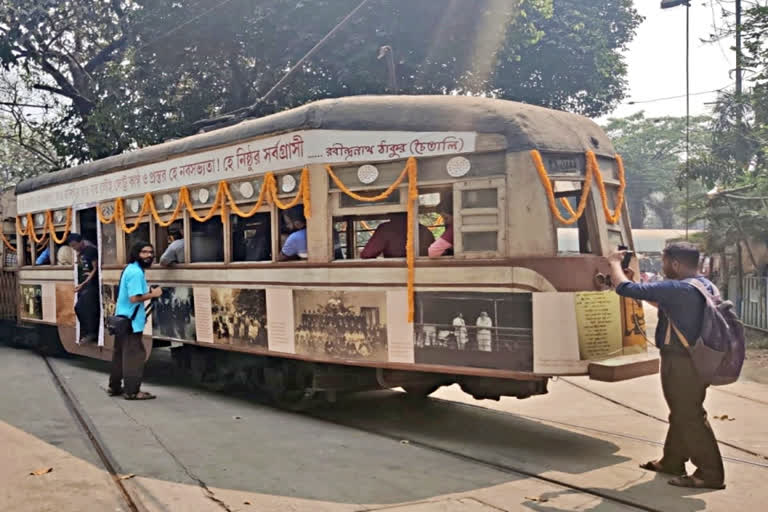Kolkata: About 150 years ago, the first horse-drawn wooden tram rolled out on the streets of Kolkata and plied from Sealdah to the Armenian Ghat. It was on February 24, 1873, that the slow but graceful giants of Kolkata Streets made their first journey. Electric trams were introduced in Kolkata in 1902.
At that time tram services were launched in several other cities across the country, but were discontinued for various reasons. However, it flourished in Kolkata, the only city in India and Asia where trams are still plying.
But the glory days of the pollution-free mode of transport are long gone and it seems that to the state administration, it is nothing but a cause for traffic snarls. From 52 routes covering nearly 70 km in the city in late 1960, the tram routes now have come down to only two.
Trams which successfully withstood the test of time in 1967, started to fight a losing battle in 1980. After being under the British Tram Wages till 1967, an ordinance was issued in the same year handing over the trams to the then Left Front government.
It received a new lease of life between 1967 and 1978 as tram services were improved in some parts of Kolkata and its sister city Howrah. The decline started in 1980 with one tram route after another being closed in the city due to the expansion of metro rail services.
The logic put forward by the administration and police is that the slow-moving trams often cause traffic congestion in the city and especially during rush hours the cops have to struggle to keep the traffic moving.
Gradually, the administration lost interest in running trams and the vehicles started to be seen more rusting away in depots than plying on the streets. Sources in the Transport Department said that in 2017, there were 25 tram routes operating in the city it has now dwindled to just two routes.
Despite promising to run trams wherever possible, Transport Minister Snehashish Chakraborty was not much hopeful about trams returning to the city in their past glory. His argument was that currently only six per cent of the roads in the city can be used by vehicles as they are not paved and in such a situation it would not be possible to run trams on several routes.
"After speaking to Kolkata Police and Municipal Corporation, those roads will be closed by pitching tram tracks. But we will definitely run the trams on the routes where it is possible. The Transport Department has no plan to hand over the trams. Trams are our city's heritage," said Chakraborty.
However, tram lovers and researchers think that the minister's logic does not hold any water. Speaking to ETV Bharat, tram researcher Dr Debashish Bhattacharya, who is associated with Calcutta Tram Users Association (CTUA) pointed out in several cities across the globe where tram services were discontinued, have now been resumed.
"At the same time, one more thing has now been added: heritage is being attached to the tram. In fact, without publicising the relevance and benefits of trams, people are being made to forget by the bait of tradition. This is absolute nonsense because, in the cities of the world where the tram was once stopped, the tram has returned with its glory," he said.
A group of tram lovers and a section of the media gathered at the Esplanade Tram Depot in Central Kolkata on Saturday to celebrate the city's 150 years of tram service. But after the event, the ageing vehicles were again back into the dark car sheds with empty seats and the ticket conductor's bell falling silent. The trams, once the joyride of the City of Joy, may soon become confined only to the pages of history.



